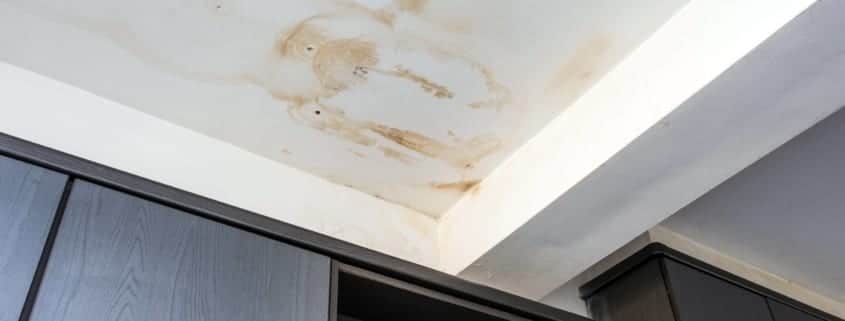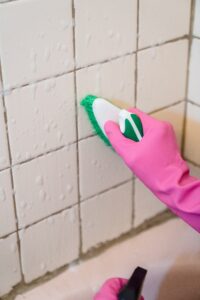Finding Water Stains on Walls - Guidelines to Assess and Repair Them
Finding Water Stains on Walls - Guidelines to Assess and Repair Them
Blog Article
Were you in search of answers about Indicators of Water Damage Behind Walls?

Water discolorations on wall surfaces are not pleasurable to the eyes. Your home should lack spots on the walls, roof covering, or floors. That is the perfect state of a residence as well as its frameworks. In some cases it seems nearly inescapable to experience water discolorations on walls in residences.
Home owners living in damp areas constantly take care of the fear of water spots on walls. But that doesn't have to hold true for you. With accurate and all-around info on the causes of water discolorations and punctual repair service procedures, you will always be an action ahead of such occurrences. This post promises to be a handy guide for you.
3 Usual Reasons For Water Discolorations on Walls
In contrast to common belief, water discolorations on wall surfaces do not constantly originate from inadequate structure materials. There are a number of root causes of water stains on wall surfaces. These consist of:
Moist
When warm damp air meets completely dry cool air, it creates water beads to form on the walls of structures. This occurs in bathroom and kitchens when there is heavy steam from cooking or showers. The water droplets can tarnish the bordering walls in these parts of your home and spread to various other locations.
Wet or condensation impacts the roofing and walls of structures. This causes them to show up darker than various other areas of the house. When the wall surface is wet, it creates an ideal atmosphere for the development of fungi as well as microorganisms. These may have negative results on wellness, such as allergic reactions as well as respiratory disorders.
Poor Drainage
When making a building strategy, it is critical to guarantee appropriate drainage. This will certainly prevent water from permeating right into the walls. Where the drainage system is obstructed or missing, underground moisture accumulates. This web links to too much moisture that you notice on the wall surfaces of your building.
The leading reason of damp wall surfaces, in this case, can be a bad drainage system. It can additionally be due to poor monitoring of sewer pipelines that go through the structure.
Pipe Leaks
The majority of residences have a network of water pipes within the wall surfaces. This makes certain that the pipes are faraway from the reach of devastating rats. It constantly enhances the practicality of such pipelines, as there is little oxygen within the walls. This discourages corrosion.
Yet, a drawback to this is that water leak impacts the wall surfaces of the building as well as creates extensive damages. A telltale sign of malfunctioning pipelines is the appearance of a water discolor on the wall surface.
Pro Pointer
A houseplant in your home also enhances its humidity. So, if your home is already damp, you might wish to present houseplants with very little transpiration. An instance of appropriate houseplants is succulents.
Water Spots on Wall: Repair Work Tips
When dealing with water stains, property owners would generally want a quick solution. Yet, they would certainly soon understand this is detrimental as the water discolorations reoccur. So, below are a few useful pointers that will lead you in the repair work of water discolorations on walls:
Final thought
No one desires to have water discolorations on walls in their home, it can take place to the finest of us. This short article offers you leverage, as you currently know just how to handle this incident if it does take place.
It is always best to hire specialist services to assist deal with the problems in your home.
Often it appears almost inescapable to experience water discolorations on wall surfaces in residences.
In contrast to preferred idea, water discolorations on wall surfaces do not constantly stem from inadequate structure products. There are numerous reasons of water spots on walls. The water droplets can stain the bordering wall surfaces in these components of your house as well as spread to other areas.
Below are a couple of handy pointers that will direct you in the repair of water discolorations on walls:
CHECKING FOR WATER DAMAGE
Water damage can be costly, and it may begin before you even notice the first signs of trouble. Water damage can cause mold and mildew in your walls and floors, which can create an abundance of health concerns for your family. It can also lead to costly repairs of various appliances and general home fixtures. To avoid the pricey consequences of water damage, here are Warner Service’s top 5 places you should check:
The walls – The easiest place to spot the beginnings of water damage is on the walls and ceilings of your home. If water damage is present, there will most likely be water stains, especially around the windows and doorframes, and/or cracks in the drywall. If a stain looks unusual (discolored to brown, black or gray, raised texture), has a swollen appearance or is soft to the touch, contact a professional immediately. The pipes – To avoid water damage, consistently check the pipes in your kitchen (especially the dishwasher and ice maker), bathrooms, laundry room (specifically washing machines) and basement for corrosion, leaks and water stains. Pay special attention to where the pipes connect in your home and the location of caulking around the bathroom fixtures, including toilets, sinks, showers and tubs. Missing or loose caulking and grout could be signs of leaking water. This seepage can also quickly cause mold and rust, so double check your water heater and tank for wet spots on the floor. The floor – Water damage is very easy to spot on the floor. Look for any warping or buckling of the material, especially in the basement. If your home has wood flooring, look for bright white or dark stains. If your home has carpeting, keep it dry and clean. A damp carpet that smells of mold could cause water damage and health problems. To avoid this, consider installing floor pans under your appliances to help prevent damages from small, slow and undetected leaks. The basement and attic – If your basement or attic smells odd check for mold and mildew around the area, especially the valley where the roof meets. While you are inspecting those areas, check for wall cracks, floor stains, rust and dampness in the insulation. If you live in a colder and/or rainier climate, perform routine checks for water damage from melting snow or ice and rain. The exterior – Check the roof for damaged flashing and missing, cracked or curled shingles. There should also be no standing water anywhere outside your home. This could be caused by puddles, leaky rain gutters or hoses, poor drainage, or short gutter spouts. Invest in a sump pump system or water flow monitoring system, and perform routine maintenance on these outdoor appliances to avoid indoor water damage.

As a passionate person who reads on Water Stains on Walls, I assumed sharing that piece of content was smart. For those who appreciated our blog posting please do not forget to share it. Thanks for taking the time to read it.
Get Started Report this page